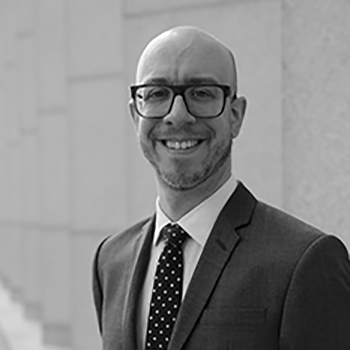
Why TCFD is ultimately about helping business make better decisions
Aon Plc
On the surface, this conference is about laying the groundwork for building a standard set of metrics for physical climate risk reporting. But ultimately, itís about enabling businesses to make better long-term decisions. If we are successful, we will give decisionmakers a set of tools, standards, and better data and analytics to enable them to hold better-informed conversations on managing physical climate risks.
At Aon, I am Head of Resilience and Sustainability. Prior to this conference, I chaired one of the Working Groups looking at the risks and opportunities from the physical impacts of climate change on corporate value chains and making recommendations on appropriate disclosure metrics for them.
So far, though, understanding the risks from the weather and climate has been like piecing together a multidimensional puzzle. The global market is making progress all the time, but at the moment we can still see only some parts of the final picture.
To date, for example, analysts have a good understanding of some of the risks, such as large-scale temporal weather events. They are good at articulating the risks of tropical cyclones, thunderstorms, hail, wind and storms. The risk models for flooding are complex, but by and large they too are relatively well understood.
The global marketís understanding of other parts of the picture, however, is currently less sophisticated. Our ability to quantify the risk from events which tend to stretch over fairly long periods of time, such as droughts, heatwaves, and wildfires, for example, is less advanced. Cumulatively, these events can have a very large impact on a companyís bottom line.
Another area where our understanding is less clear are the second and third-order effects of weather and climate change. These cover consequences for corporate value chains, trade flows, and the broader macroeconomic environment, such as weather-based interruptions to business, delays to a construction projects, the necessity to reroute shipping, and so on. This is what Working Group 3 has looked at.
The question today is: how can we all improve our understanding of those risks and work to mitigate them?
At Aon, we have invested a great deal in data and analytics. We are continually developing new models and looking outside traditional insurance tools to do so. For example, we have developed some interesting non-traditional products such as index-based solutions, sometimes with conditions attached. They might, for example, be indexed to rain days, paying out a predefined amount for each day that a rainfall target is met. They might be indexed to heat days, or the dryness of a season, low wind, low radiation, the output of renewables generators, the height of waves, frost, and so on.
But the work of this conference gives us an opportunity to significantly refine the metrics and assumptions
on which such products are based. When we have new guidance on climate risk reporting in place, it will give financial analysts, institutions and other actors more information, which will enable them to take their own view of risk and opportunity and transform it into value.
An example is instructive here. Imagine two real estate investment trusts building glass buildings in an area which is expected to become significantly warmer over the coming years. The one that has better information about future temperatures will be better able to estimate the costs of cooling them down, giving them a commercial advantage.
A similar dynamic plays out with sea-level rises. If a similar real estate investment trust is building in an area expected to be affected by longterm rise in sea levels, it can expect the rising water levels to affect its potential rental income from those buildings. The trust which is able to estimate and articulate the extent of that change has the advantage and can make better acquisition and development decisions accordingly.
This is why it is important to understand that the work of this conference is not just about disclosure or box ticking; it is about better decision making. Companies which use these tools and guidance we develop will be better equipped to come to conclusions about their future risks which are well-founded and rational. They will, in short, have an advantage.